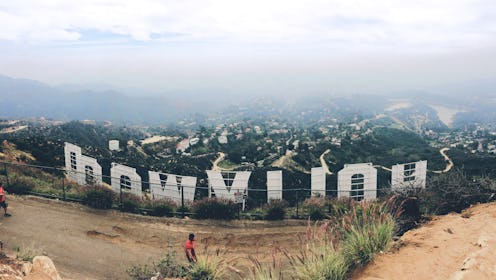News
This State Has The Most Electoral Votes

With the 2016 election nearing its climax, it's time for a quick refresher on how our votes will decide the next President of the United States. Thanks to the Electoral College, your vote may carry more weight dependent on where you reside. So, which state has the most electors? It's an important question to ask this election year. As we saw in the 2000 election (where Al Gore won the popular vote, but George W. Bush won the electoral college), every vote counts, especially in states where there are quite a few electoral votes up for grabs. To determine the scope of impact your ballot will have on Nov. 8, read on.
As we learned many years ago in Civics 101, unlike state representatives, the president is chosen indirectly through electors nominated by each state. In this system, each state is awarded a certain number of votes in proportion to the size of its population: one vote goes to each of the state's two senators, and one to every member they have in the House of Representative. This results in a total of 538 electoral votes, with candidates needing a minimum of 270 votes to snag the presidency.
All states, excluding Maine and Nebraska, have agreed to a "winner-take-all" format, where all electors pledge their votes to the presidential candidate who wins the popular vote in the state.
Maine has four electors, and Nebraska has five, and they can split them based on the "congressional district method." If for some reason, no candidate wins a clear majority and the electoral college fails to elect, the President is chosen by the House of Representatives, with each state delegation receiving one vote.
Of all 50 states and the District of Columbia, California has the most electors with two senators and 53 members in the House of Representatives. This results in a total of 55 electoral votes — a fifth (or 20 percent) of what a candidate needs to become president. The allocations of votes per state are based on the 2010 census, which put California at the top with 55, Texas in second with 38, and New York and Florida tied for third with 29 a piece. These votes are fairly important when compared to the seven states on the lower end of the electoral spectrum with just one representative — Alaska, Montana, Delaware, North Dakota, South Dakota, Wyoming, and Vermont.
California has gone blue in the last six elections, and has been voting Democratic in growing margins since 1992. The state seems on-track to continue this streak come November, giving presidential candidate Hillary Clinton a helpful boost. Americans are now turning their attention to battleground states Nevada, Ohio, and North Carolina where, according to CNN/ORC polls, the race is too close to call. Clinton holds a small lead in Nevada (6 electors) and North Carolina (15 electors), and trails in Ohio (a sizable 18 electors). Come November, we shall see what the electoral college has to say about it.
Images: Mat_Weller/Unsplash, getty, Giphy